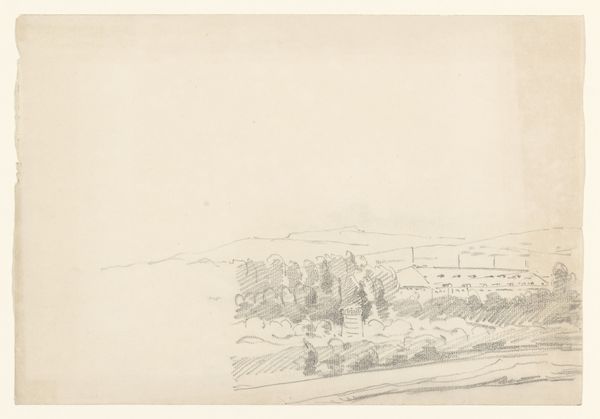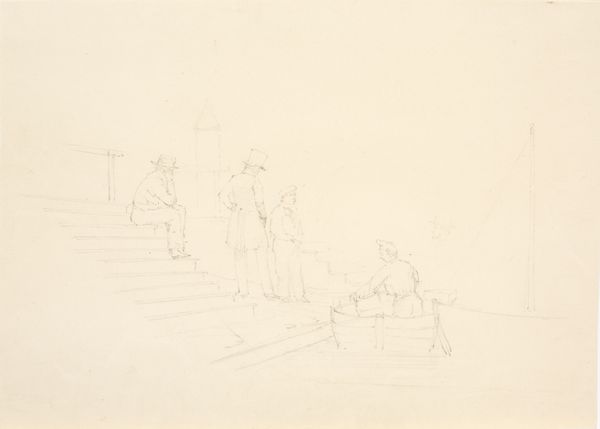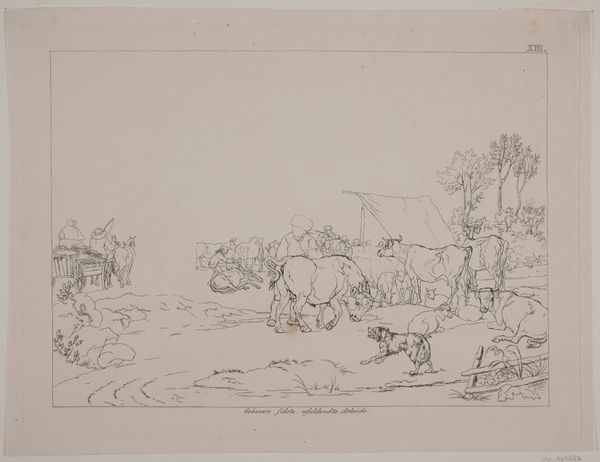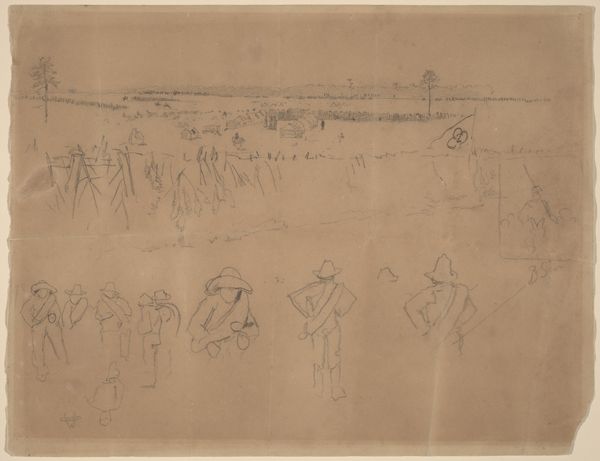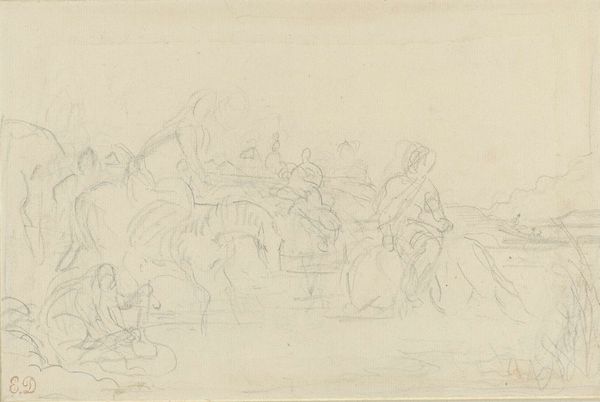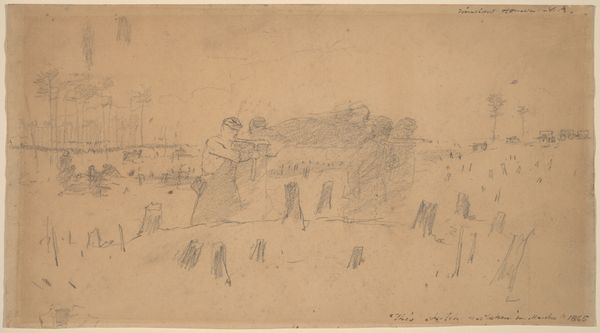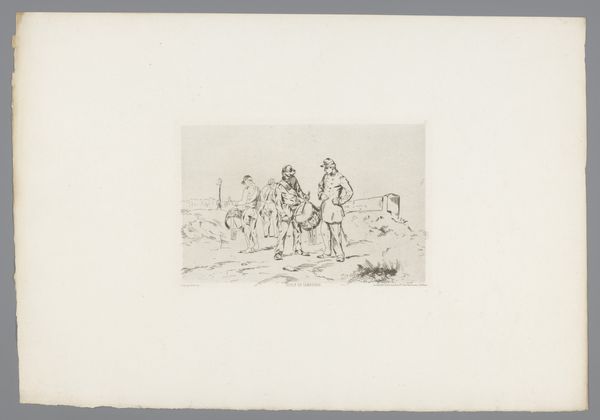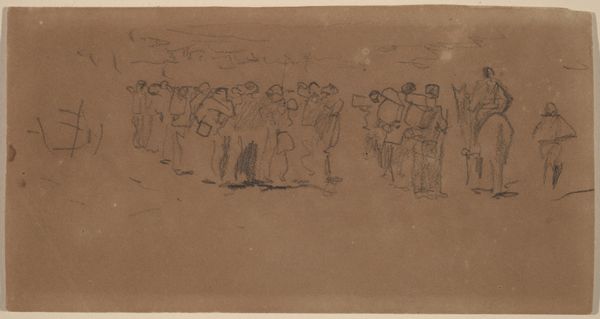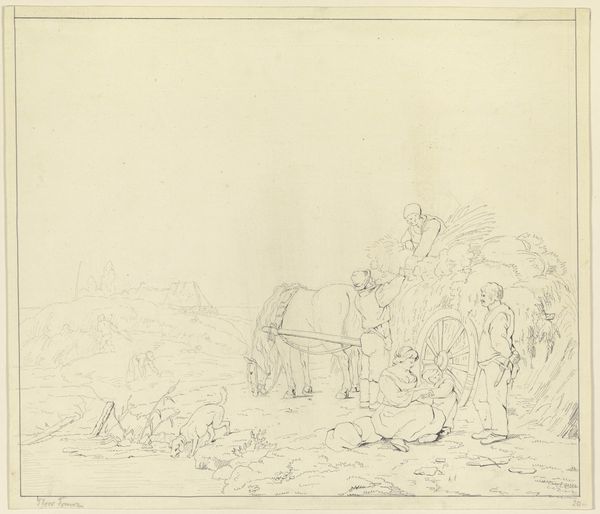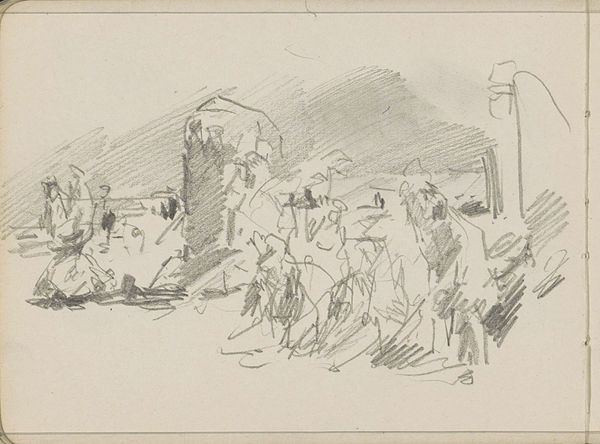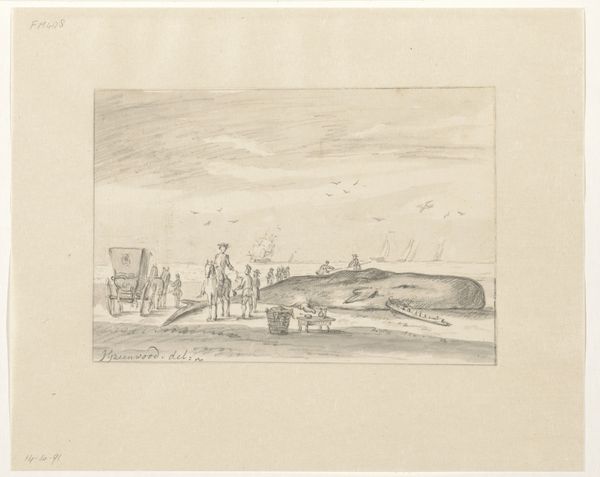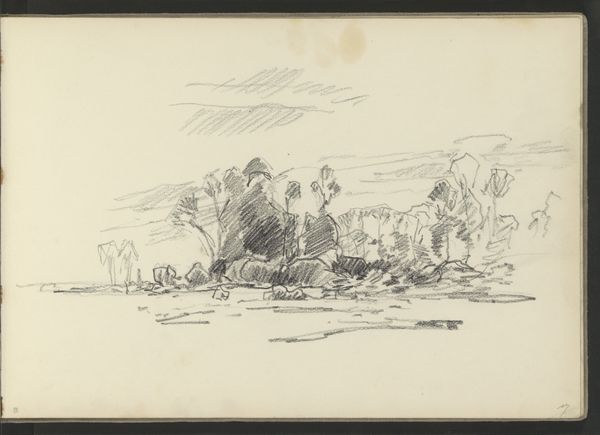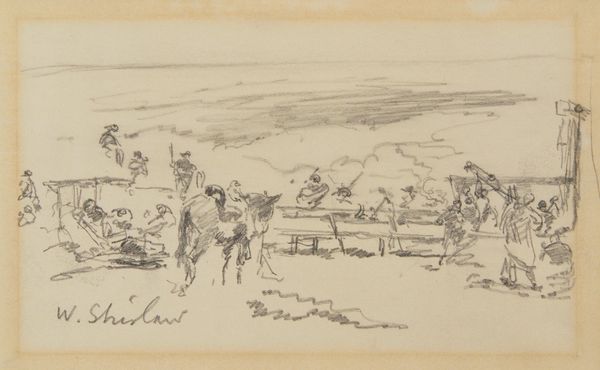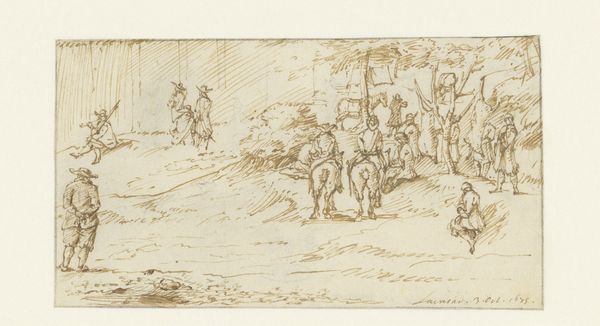
drawing, paper, pencil
#
drawing
#
landscape
#
paper
#
romanticism
#
pencil
#
realism
Copyright: Public Domain
Curator: Welcome. We're standing before August Lucas's "Washerwomen by a Bridge," created between 1830 and 1831. It’s a pencil drawing on paper, currently held at the Städel Museum. Editor: It has a certain quietude, almost melancholic, to it. The pale grays and subtle rendering make the figures seem both present and fleeting, like ghosts in a landscape. Curator: Precisely. Lucas captures the spirit of Romanticism with his landscape. The washerwomen, the focal point, are depicted carrying out a traditional task, but their placement beneath the grand arch of the bridge also emphasizes the ephemeral nature of human activity in the face of enduring structures. Bridges in art often symbolize transitions, connections, and even aspiration. The water, of course, adds another layer of symbolism, speaking to purification, the passage of time, and the unconscious. Editor: Yes, the rhythmic repetition of the bridge's arch mimics the curves of the figures below. The lines that make up the image show movement while retaining structure and weight. Also, the tonal scale created by the density of his hatching and cross-hatching defines each plane as receding. It's an adroit play with depth and light. Curator: It makes us consider the social history embedded within a seemingly simple landscape. The women represent the laboring class, their lives interwoven with the rhythms of nature and the constraints of their societal roles. They are the enduring symbol of the cyclical nature of daily existence. The drawing speaks of human connectivity, a community formed by the same rituals of labor. Editor: The bridge serves as a solid architectural presence contrasting sharply with the fluidity of the water, creating visual interest, with the somewhat amorphous women at its base. This solid-liquid visual push-and-pull, even the drawing quality contrasts with the bridge; he uses hard and loose hatching, emphasizing both at the same time. Curator: Ultimately, Lucas encapsulates Romanticism through this study. He suggests a reverence for nature and the power of human endeavor, a moment in history defined by profound socio-economic change. Editor: Well, Lucas clearly considered formal qualities while drawing the scene. I've found his artistic touch makes the mundane transcendent through tonal exploration and calculated rendering.
Comments
No comments
Be the first to comment and join the conversation on the ultimate creative platform.
